Support strong Canadian climate journalism for 2025
A First Nations community in Saskatchewan is feeling abandoned with poisoned waters in the wake of a major pipeline spill that has leaked massive amounts of oil and other toxins onto its territory.
The devastating impacts that the James Smith Cree Nation observed this week on wildlife, nearly 300 kilometres away from the source of a Husky Energy pipeline spill, are coming to light as the Calgary-based oil company dismissed allegations that it hired an industry-friendly consulting firm to assist with water testing in order to downplay the disaster.
Husky has been under fire since one of its pipelines failed early on July 21, releasing up to 1,570 barrels — roughly 250,000 litres — of crude oil and other toxins into the North Saskatchewan River, a drinking water source for thousands of Canadians.
The disaster prompted emergency water restrictions in several municipalities, killed more than 140 animals, and is the subject of federal and provincial investigation.
The James Smith Cree Nation, a community of 1,600 people about 80 kilometres east of Prince Albert, has not been impressed by Husky's response. Chief Wally Burns said the provincial government has sent officials to test the water, but his own community is now running out of funds to pursue its own response to the disaster.
“Husky hasn't come to the table and they failed to help," said Burns in an interview with National Observer. "That’s the way I see it. And yet it’s their problem. I’m just here to protect my people, the future generations to come, so that they can have a good life.”

Consulting firm accused of protecting industry
Adding fuel to the fire is the fact that one of the expert organizations recruited to analyze Husky's water data from the river, the U.S. based Center for Toxicology and Environmental Health (CTEH), has previously been accused of "protecting industry" by downplaying the severity of oil spills. The controversial consulting firm whole-heartedly denies these accusations, but its involvement has still prompted some critics to question whether the public can trust any information coming from Husky about its cleanup.
Husky spokesperson Mel Duvall would not elaborate on CTEH's particular role in spill analysis beyond information already available on Husky's website, but confirmed via email that it had been contracted exclusively by Husky, and responds to the company's Unified Command, which directs emergency response in partnership with the Saskatchewan Ministry of Environment.
The consulting firm is part of Husky's technical working group charged with determining "current and ongoing risks to aquatic life," along with various engineers, toxicologists, and environmental and public health specialists. The group's collective analysis will help inform final recommendations from the Saskatchewan and federal government as a result of the spill, and will also be considered by water security experts, biologists, chemists, and environmental protection officers.
Critics say the use of the U.S. consulting firm is particularly troubling given that Husky has declined to provide the public with a detailed breakdown of the methodology used to collect more than 1,000 water samples from the North Saskatchewan River, including how long after the spill they were taken, how badly they flunked government drinking water safety standards, and what proportion of the samples were taken at varying river depths as the crude oil began to sink.
The results for sampling of the James Smith Cree Nation water have not yet been released, but officials have previously noted that only five samples from completed tests revealed dangerous levels of toxins unfit for human consumption, and that no additional samples taken more than three days after the disaster exceeded drinking water guidelines. Chief Burns's observations however, suggest the problem is more serious and raise questions about the water samples that passed the testing, which were, in part, analyzed by CTEH.
"Fox guarding the chicken coop"
In 2010, the New York Times published a scathing article raising questions about the objectivity of Center for Toxicology and Environmental Health (CTEH), a science-based environmental consulting firm headquartered in Arkansas. The company rose to prominence in its field after analyzing test results for large energy corporations during a 2005 Hurricane Katrina-related oil spill in Louisiana and a flood of coal ash in central Tennessee in 2008, among other toxic accidents.
But as the firm was contracted by BP to provide analysis during the 2010 Deepwater Horizon oil spill in the Gulf of Mexico, the Times reported a "troubling pattern" revealing that CTEH has regularly failed to release a complete portfolio of data from its studies, which tends works in its client's favour.
After the 2008 breach in the Tennessee Valley Authority's coal ash dam, for example, CTEH staffers were caught installing low-volume air quality monitors that fell short of U.S. Environmental Protection Agency standards. Two years earlier, it failed to find unsafe levels of hydrogen sulfide in drywall during a study commissioned by a Chinese manufacturer, despite that very same manufacturer appearing on a top 10 list of "problem drywall" manufacturers identified by the U.S. Consumer Product Safety Commission.
In 2005, while on contract for Murphy Oil to work on a spill from a refinery damaged by Hurricane Katrina flooding, a CTEH employee was further found on video by a Louisiana nonprofit group, "smacking a soil sample against the pavement to dilute any possible chemical contamination before testing."
"It's essentially the fox guarding the chicken coop," Nicholas Cheremisinoff, a former Exxon chemical engineer, told The New York Times. "There is a huge incentive for them to under-report... the same thing applies on the health and safety side."
Husky Energy dismissed the concerns via email.
"It’s a Green News article," Duvall said of the New York Times piece. "All information is being shared openly with all levels of government and CTEH is working at the direction of Unified Command."
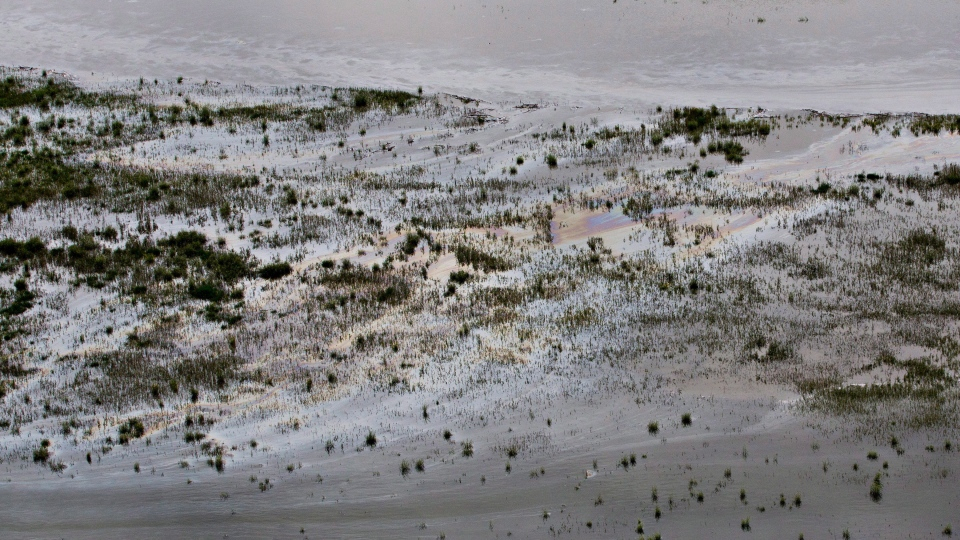
Husky accused of "manipulating" public opinion
In an email to National Observer, CTEH spokesperson Denver Peacock said the firm continues to refute the piece published in the New York Times, which "has no basis in fact."
"In conjunction with our partners on the ground, as well as local, provincial and federal government agencies, CTEH’s scientists work with the highest level of scientific integrity and transparency to protect the public and the environment," said the email.
Paul Nony, a CTEH toxicologist working on water quality assessment for the Husky oil spill, turned down National Observer's request for an interview, but was previously quoted in the Toronto Star after five water samples from the contaminated North Saskatchewan River failed to meet federal guidelines for safe drinking water:
"It’s been mostly fairly low levels, but just happen to be above those conservative benchmarks," he said in an early August press conference. "But again, these are sporadic detections that exceeded those benchmarks."
Nony also told the Globe and Mail that these results "suggest there is not an ongoing issue, which is fairly expected,” and that CTEH is "not seeing any surprises."
Mark Calzavara, a regional organizer for the social action organization, Council of Canadians, accused the consulting firm of "downplaying the effects of the spill in the media."
"Husky is desperately trying to manipulate public opinion after their disastrous spill," he said in an interview with National Observer. "The Center for Toxicology and Environmental Health is nothing more than a hired gun brought in to downplay the effects of the spill. They would be more aptly named 'Oil Spill Spin Incorporated,' which better describes their history and clientele."
The accusations, while unproven, are concerning given that Husky has refused to answer repeated requests from National Observer for more information on the methodology of its water quality testing, the timeline of the spill's detection, and when such data might be made available to the public.
“I suggest you go to our website for the latest information,” was all Duvall, its spokesperson, said in an email statement.
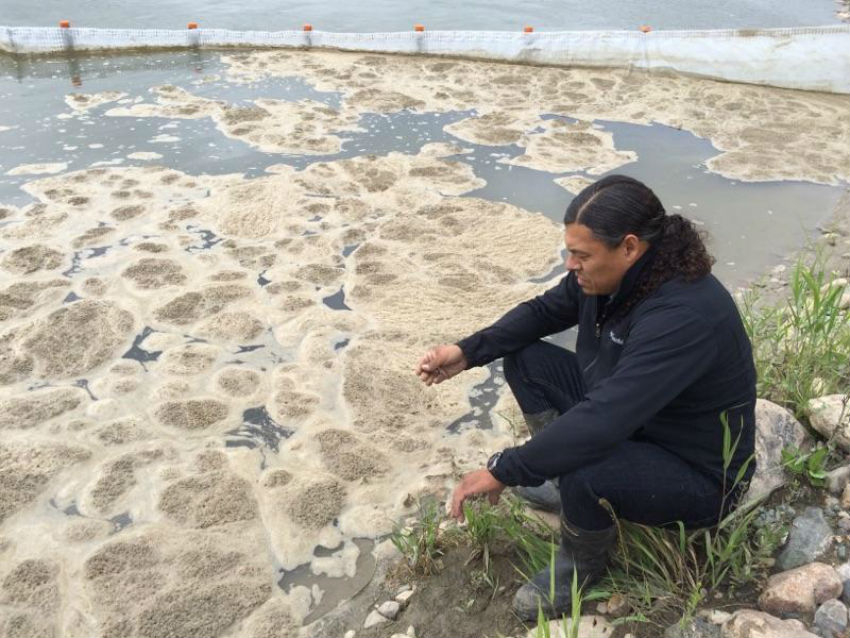
James Smith Cree Nation left behind
Readers won't find any information on Husky's website however, describing the plight of Saskatchewan's James Smith Cree Nation, whose portion of the North Saskatchewan River is covered in a visible oil slick. The Indigenous community is located past the point where Husky has focused much of its containment effort, and has been forced to set up its own booms to contain the oil and foam washing up along its shoreline.
“I don't know what kind of booms Husky has but I’m pretty sure their booms aren't working,” Chief Wally Burns told National Observer. “I walked the beach yesterday and noticed that there are a lot of crayfish that are dead.”
According to Husky's latest water quality assessment update, its technical working group — which includes CTEH — has collected more than 2,000 water samples from the site of the spill near Maidstone, Sask. to Prince Albert, which declared a local state of emergency after the leak compromised its drinking water. The report gives no indication that Husky has tested any water as far east as the James Smith Cree Nation, and its spokesperson would not confirm in an email whether Husky knew the spill had extended that far, or whether it had any intention of extending its spill response to include the Indigenous community.
"We have worked closely with the experts to determine where the booms can be most effective," wrote Duvall.
But that's not good enough, according to Chief Burns, who said that in addition to leaving a trail of dead crayfish, the spill has forced most of the butterflies, dragonflies, and frogs in the area to retreat. He also said his community has had two meetings with Husky Energy to discuss the problem, both of which have been unproductive, and that the band has been forced to deplete its $17,000 budget — initially allocated to deal with a flooding problem — to its own spill response initiative.
He hopes Husky will compensate them, but was not thrilled about the company's early response.
“The way I see it, they’re downplaying everything," he explained. “Right now, we’re going to do this on our own with what little resources we have… and we’re going to show Husky that they violated our rights."
Burns said Husky had finally agreed to meet with him again on Thursday, along with government officials from two federal departments: Environment and Climate Change Canada and Indigenous and Northern Affairs Canada. When asked about this, Husky declined to confirm or comment on whether it has ever had any meetings with the First Nation.
The entire affair not only raises questions about the company's transparency, but about the real quality of the water toxicity tests before performed by CTEH and the technical working group. How far along the river do they really extend? How badly did they fail federal safety standards?
Émilien Pelletier, a water chemist at the University of Quebec in Rimouski, said “there’s no question” this information should be made available to the public, and labelled the company’s silence as cause for concern.
"The public needs to know"
“It’s a basic scientific requirement,” he told National Observer. “They should provide all the details on how they get the samples, how they analyze it and what the limits they should comply with are."
Without commenting on whether or not the effect is intentional, he added that in providing "very limited information" on its spill response efforts to the public, Husky has ensured that chemists like him cannot give media any clear statements about how catastrophic the accident truly is, and how well the cleanup efforts are going.
He is not the first academic to comment on the lack of details in the energy company's reports; Vince Palace, an aquatic toxicologist for the Winnipeg-based International Institute for Sustainable Development told CBC after the first water test results were released that more details needed to be tracked and shared to properly determine how the North Saskatchewan River, and drinking water, will be affected in the months to come.
Greg Dionne, mayor of the severely impacted City of Prince Albert, said he is also concerned by Husky's silence on the science.
“The public needs to know,” he said in a phone interview. “[Husky] wants the public support on pipelines and to make people more comfortable. They should be answering all the questions.”
Prince Albert was forced to build a new pipeline to provide an alternative source of drinking water to residents after the spill, and only recently started to resume regular water service to homes and community facilities. While the mayor remains focused on the drinking water issue for now, in the future, he said he will turn his attention to other information gaps left open by Husky — namely, the cause of the pipeline leak.

Big hole in Husky's spill timeline
According to an incident report filed on the spill, Husky Energy detected an irregularity in the faulty pipeline around 8 p.m. on Wed. July 20, and notified the Saskatchewan government at 10:30 a.m. the following morning. A July 26 update on the company’s website however, claims that Husky officials organized aerial surveillance to fly the length of the pipeline “at the first available daytime opportunity,” on Thurs. July 21, and that the pipeline was shut down promptly at 6 a.m. that day.
But as Calzavara from Council of Canadians pointed out, at the time of the spill, the first available daytime opportunity was presumably sunrise, between 5:30 a.m. and 6 a.m. Assuming the company started its surveillance early, as it claimed, why did it take four hours to detect the spill and notify the government?
Husky would not confirm in an email to National Observer that the aerial surveillance even took place, nor would it confirm precisely what time the spill was detected, or what the length of the pipeline was, in order to extrapolate how long it would take to fly over the entire line.
"[The flight] seems to have disappeared into the Bermuda Triangle," said Calzavara. “It’s something nobody has really talked about — the PR game Husky is playing on the spill. By keeping information out of the public sphere, it really indicates that they're hiding something.”
Husky has already come under fire for not notifying the provincial government immediately after detecting an anomaly in its pipeline, and refusing to confirm whether the pipeline that leaked — built in 1997 — was reviewed or assessed when a new section of pipeline was added to its gathering system in 2014.
Calzavara also raised concerns about Husky's insistence that it be the first point of contact for members of the public who encounter wildlife impacted by the spill. The company's emergency hotline, he argued, gives the corporation responsible for the accident the opportunity to perform major damage control:
"Anybody who finds a dead or injured animal or fish — the only thing they’re supposed to do is report it to Husky and turn it over to them," he explained. "Why is the provincial government is not stepping in there? To be handing it off to the company that caused the spill does not give any confidence that their numbers on wildlife are going to be accurate."
National Observer sent a list of questions to the provincial government in Saskatchewan asking about its level of satisfaction with Husky's spill response efforts and scientific methodology, but an email statement from its Ministry of Environment failed to provide detailed responses.
Saskatchewan government scarce on details
"Husky is continuing to update the public in regards to its recovery work and environmental impacts, and has released information, including some water testing information, on its website," said the statement. "The Ministry is participating in a discussion on the future release of more data in a manner informative to the public, including the potential for graphic information such as maps."
Despite its own experts having access to the company's data from the spill, along with Husky, it declined to share this data with National Observer, and could not provide an estimate on when that science might be available to the public for analysis. The ministry said the energy company has its own "protocol to release information on spill responses, including water quality information, publicly on a regular basis," and advised that further media inquiries should be directed to Husky.
The response was deeply unsatisfying to Calzavara, who accused the province of "kowtowing" to a corporate energy giant response for a catastrophic oil spill
“It’s so outrageous that the Government of Saskatchewan is capitulating to Husky’s protocols about information on a public spill," he said. "The Government of Saskatchewan — right from the start — they’ve been so complicit I would say, in restricting information, the public is really in the dark around this.”
The federal environment department, Environment and Climate Change Canada, has also been in the loop with regards to data from the Husky oil spill, but said in an email it could not comment on the matter, as the accident remains part of a federal investigation.
Cleanup efforts in the North Saskatchewan River shoreline are ongoing, and Husky has reported that roughly 47 per cent of the shoreline has been cleaned so far. Saskatchewan's Water Security Agency has recently reported that while the major water way is now safe to drink from, it remains a hazardous environment for wildlife.
— with files from Mike De Souza
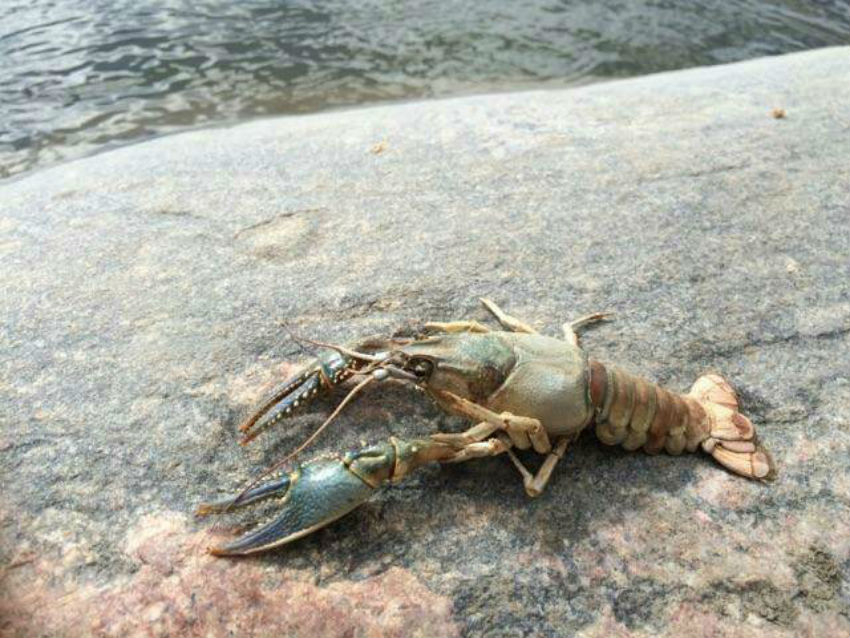

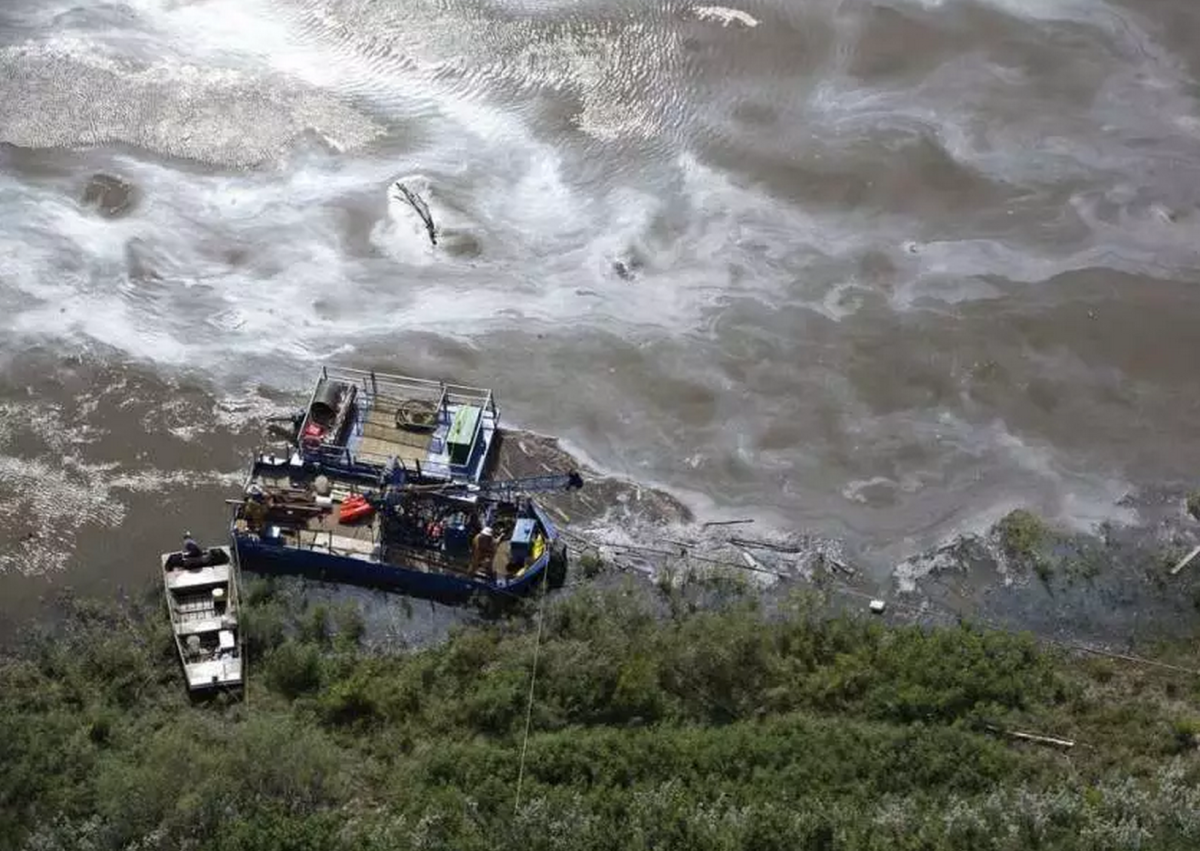

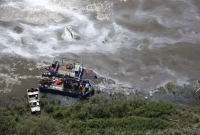

Comments
What, the ultra-conservative Saskatchewan government "failed to provide detailed responses"? How is that possible? Visions of their bed partner rolling over and lighting a cigarette. "Was the cover-up good for you too?"
Air Jordan Retro 6
A great deal of negative feelings, like stress and panic, may come from a feeling of being overstressed. This large workload is practically usually mental, not physical in nature. Doing a bit of extreme actual physical labor can in fact be a terrific way to decrease stress levels in addition to continue to really feel successful.
https://www.soulwork.dk/images/sou2/10876-nike-air-max-95-hvid-og-blå.jpg
Whenever a kid snores, she or he is not getting the correct level of sleep necessary to functionality typically in the daytime or in class. The behaviour difficulties caused by exhaustion and sleep deficiency are frequently wrongly diagnosed as ADHD in children. If your little one has become diagnosed with ADHD, make sure to recognize if snoring loudly is found and if it is, have a second judgment.
https://www.tassenmerkoutlet.nl/images/for2/11649-tas-longchamp-jakarta…